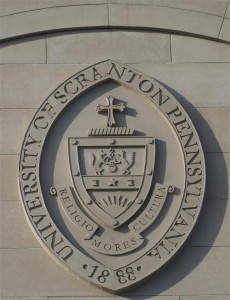GFRC Wayfinding: Breadcrumbs for Your Patrons
Wayfinding has come a long way from following a humble trail of breadcrumbs. Whether you are flagging a trail through a city with directional signage, or marking the boundaries of a college campus with signage, it is reassuring for patrons, guests or customers to have something to look at to let them know they are going the right direction. Stromberg Architectural Products manufactures various GFRC signs, crests and entablatures to guide your patrons.
About Wayfinding
Wayfinding is about orienting your consumers so they can find their destination on your property. It consists of five major components:
- Paths are areas that channel movement, such as sidewalks.
- Edges are where two types of areas meet. The edge where a road meets a lawn is an example of this.
- Districts are clumps of similar areas of activity. The administration building, classrooms, and dorms are each districts.
- Nodes are places where lots of activity takes place. The school cafeteria is a good example, or the proverbial water cooler in an office.
- Finally, Landmarks are places of interest that help mark each of the preceding places. These can be graphical, such as signage, or actual items, such as a church spire.
The elements of wayfinding should be set up in such a way that people flow easily to their destination. Whenever possible, landmarks should engage more than one sense. This is especially important for locations that serve disabled populations. Audible maps, tactile strips, and visual cues are all important for efficient, accessible navigation between parts of the area being used. Wonderful facilities mean nothing if no one can find them.
The same is true if your population speaks more than one language. Using pictographs as well as words helps people who do not read, or do not read your language, find their destination. It takes a bit more space, but you include an often forgotten population.
Stromberg Glass Fiber Reinforced Concrete Leads the Way
GFRC can easily be used to make the landmarks your consumers need to find their way. From bollards to signage, GFRC can lend an elegant air to your maps, path markers, and other landmarking items. GFRC is:
- available in many different designs
- available in many textures, colors, and finishes
- nontoxic and fire resistant
- relatively lightweight
- able to be customized to suit your needs
- able be cast with light features in the item
GFRC Projects Featuring Wayfinding
- Clay Academy, Dallas, TX — landmark columns for building
- Commerce Bank, Afton, MO –GFRC surround for landmark clock
- D.A.R.T., Dallas, TX — tactile warning strips for train platforms
- George Bush Airport, Houston, TX — bollards to control traffic
Specific Applications of GFRC in Wayfinding
- Bollards mark pedestrian and traffic pathways
- Illuminated bollards mark pathways even in the dark
- GFRC signage may be placed on buildings to guide visitors
- Walls clad in GFRC can have signage cast into the surface for easy identification of each building
- Tactile strips made of GFRC can be used to guide visitors without sight and meet ADA requirements for this kind of guidance
- Markers for buildings, such as fruit shaped bollards for grocery stores
For More Information on Stromberg GFRC
Professionals at Stromberg Architectural Products are waiting to assist you with your GFRC project. Stromberg offers design assistance, CAD details, and specifications. Visit www.strombergarchitectural.com for more information about landmarks in quality GFRC, or call (903) 454-0904. Stromberg is here to help, and the initial consultation is free.



October 13, 2011
GFRC Information